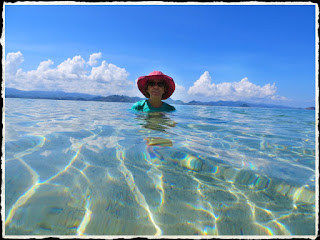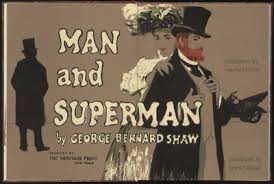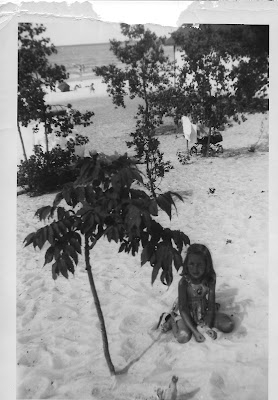Monday, March 27, 2017
Illustrated Books
" For frolicking along the shoreline where text and image combine to produce something which is a pleasure to look at as well as read, you can't beat a physical book."

I decided I'm going to divest myself of all my ordinary books and replace them with classics or books that are "pleasant to look at" or leaf through.
Perhaps I'm the last person on earth to catch on to the current state of publishing.
Alan Burnet, News From Nowhere.
I recently acquired a copy of GB Shaw's Man and Superman from the bottom shelf. The binding is beautiful, most of the pages illustrated by Charles Mozley. Although I've read a bit of the two forwards, I purchased it to hold and feel. Most everything I wish to read, I get on-line and while on-line reading is convenient in every way, nothing can replace the feel of a book. Especially an illustrated book....

Perhaps I'm the last person on earth to catch on to the current state of publishing.
Thinking back to the last book, actual book, I purchased, it's Footnotes from the World's Greatest Bookstores by Bob Eckstein.

The heavy cover lifts up as in up and down, instead of right to left.

Each page, nicely illustrated, has the front inside cover in view. It's very nice to thumb through. I'm reminded a bit of a children's book.
One of the books I uncovered in my assessment of our book shelves is Richard's copy of Through the Looking Glass, 1946 edition. I checked it out on EBay at about $85.00, but his copy has a little water damage. I don't think he'd part with it for any price.
One of the books I uncovered in my assessment of our book shelves is Richard's copy of Through the Looking Glass, 1946 edition. I checked it out on EBay at about $85.00, but his copy has a little water damage. I don't think he'd part with it for any price.
A trip to Dr. Jones
Cashew came flying into the house, hacking and coughing. He'd back up, then run forward, hitting his head against the wall. It was obvious that he had something caught in his throat. He settled down and we thought he'd hacked up whatever it was. But no, he started up again—horrible hacking and choking. As it was 10:00 p.m. and he settled again, we hoped the obstruction, whatever it was, would either be hacked up or digested by morning.
Cashew is a very lively cat, always playing, or running around. In the morning, he sat quietly, curled up into a little ball and we knew he was still in trouble. Off we went to see Dr. Jones.
 |
| Cashew wearing cat armor while attacking his catnip mouse. |
The waiting room was full and dominated by this trio. The owner, Me and Mini Me. Me, was a great Dane mixed with something. Mini Me was some kind of boxer. They were fairly well behaved only moaning and panting heavily, very agitated. We left Cashew out in the car until we were called to spare him the stress of sharing the small space with the dogs.
 |
| Owner, Me and Minime |
 |
| Minime, handsome but anxious. |
Just as it happens when you take your car into a garage with a problem, the problem disappears, so did Cashew perk up and start jumping around on the examining table while we waited for Dr. Jones. He peered into C's throat and said it was red. He couldn't see an obstruction. We left while he took an X-ray and anesthetized Cashew for further examination.
An hour later, the assistant appeared with the offending stiff, pronged grass in hand. It was stuck in Cashew's palate; the poor cat was really suffering. The quarter is only for size comparison. The price was much higher—$450.00. Worth every penny for the services of the excellent and compassionate Dr. Jones. He is worth his weight in gold.
Sepia Saturday 361: Heads Off to Fun

I loved the prompt this week. We weren't clever enough to think of posing this way. My family beach photos are standard fare.
This photo of my sister and me makes me laugh. We look so helpless and puzzled, like we just landed on Grand Beach, Manitoba from another planet. I'm guessing our father was manning the camera and shouting instructions for us to look like we're having fun. That never works does it?
There was a plan to take my photo every year under the little tree and there would be a record of
both of us growing. I don't think the plan worked out as I could find only two photos, perhaps two years apart.
And finally, two of my favorite beach photos taken sixty-six years and eight thousand sixty-six miles apart. I felt the same joy of the moment: warm clear water, silence but for lapping waves, blue sky, contentment.
 |
| Grand Beach circa 1947 |
 |
| Angel Island, Indonesia, December 2013 |
For more fun beach photography, use your head! Link with Sepia Saturday.
Wednesday, March 22, 2017
Spode - For writing group
What could I offer to Spode?
To get it in every abode?
Should it fit in the sink
Or be painted in pink?..................
For that awful year, every morning on my way to KalKan Foods, on E. 45th Street, I drove past Farmer John’s slaughterhouse, known as the Sistine chapel of Vernon because of the murals painted on the walls and fences. It was the worst job I ever had. I took it for money, for a thirty percent increase, and found out later why the company paid higher wages than the rest of the industry.
The weird cavorting pigs painted on the F. J.mural reminded me daily I was about to enter the crazy twilight zone of my job. The working environment stunk. It was noisy beyond belief and often dangerous. I worked with three oddball PhD’s: an obsessive-compulsive who expected me to memorize every danged formula; an introverted female researcher, and a wild, drunken English playboy. The three disliked each other, lied to each other and rarely spoke, except to complain. They convinced management to create my position to foist off all the tasks they hated and improve communication in the lab. My job description included the pet food testing program, answering the midnight phone calls to approve ingredient substitutions for the plant, delivering talks to kennel clubs, keeping the nutrition analyses current, conducting tours for lab visitors, translating for the trio and keeping projects on track.
While most of my business associates and friends at the time, worked in pleasant surroundings and lingered over lunch in fine restaurants, I spent my days in Vernon in a hard hat and lab coat and ate lunch at Frank’s Cafe, the favorite dining spot for packing district workers. Frank’s had the worst ambiance of any eating establishment I’ve ever seen. No kidding—prison cafeterias were more inviting.
After you pushed the door open at Franks, you entered a cavernous hall furnished with ugly Formica tables lined up in rows. The air would be thick with cigarette smoke and cigar fumes and testosterone. At noon the place would fill up with workers, 98% of them men, dressed in white coats streaked with blood and gut scraps, wearing hairnets under hard hats and beard nets if they had facial hair. Everyone clomped around in boots with steel toes.
A typical daily special was a one-pound Salisbury steak, so large it hung over the sides of the plate, served with a minor mountain of mashed potatoes, the whole ugly thing slathered with country gravy. If you uttered the word “salad”, they’d have called the police. Every man felt compelled to get attention from the few women eating there with catcalls, whistles, remarks or propositions. My options for lunch were to run that gauntlet at Franks or endure the stripper-style restaurants (it was the 70’s) where the ingredient salesmen took the lab guys for hamburgers, beer and a skin-show. I went along with them once and brought my lunch from home afterward.
One evening, after spending a half-day testing dog food in a kennel, suffering through a Frank’s lunch and enduring a hard ride home on the freeway, I got a call from a recruiter who asked, “What would you think about working for Spode?” “Spode?” I repeated, sure I’d misheard him. “Are they in the food business now?” I asked. “Not exactly,” he said. “They’ve decided they want a food person on their creative team. Your name came up.”
 |
| Spode Place Settings |
Baffled, I thought perhaps the unlikely connection was because Spode was bone china? As I began to tell him it seemed too much of a stretch, he said, ”You’d be working in their offices in Century City.” That did it for me. Century City?? My eyes lit up. I didn’t care what I’d be doing. “Yes!” I said, with excitement.
During the time leading up to the interview, like a teenaged girl writing the name of her boyfriend over and over, I dreamed and doodled about my possible future. I envisioned my new business cards. “Creative Food Person, Spode.” I read everything available about the company but I failed to see how I’d fit in.
Regardless, my mind raced forward to my imaginary new life. I would toss out my cleated boots, my hard hat, and hair nets. I’d wear snazzy suits and even high heels to work. Everyday lunch would be at Spago or one of those great Century City restaurants. I’d dab on perfume. I’d enjoy being a girl again.
The day of my life-changing interview arrived. I was ushered into the VP’s office on the thirtieth floor and seated in a wheeled chair in front of his desk. To my right, ten feet away, was a wall of floor-to-ceiling windows with a view west to the ocean and down to the street below. I’d never had a fear of heights—but I froze in a kind of panic attack. A combination of pre-interview jitters and my lack of confidence that I had anything to offer the company overwhelmed me. I tried to concentrate on the interview but my brain fixated on the sharp drop to the ground and the wheels on my chair. Sweat ran down my forehead like it did on Albert Brooks’s in Broadcast News. I don't remember what was asked nor what I answered. All I wanted was to escape—as fast as possible!
It was no surprise when the headhunter called to inform me I wasn’t getting an offer. My excessive sweat hadn’t been interpreted as enthusiasm. I’d acted like a caged mouse with a cat peering through the bars. Later, I learned they never filled the position; I felt strangely vindicated.
After that interview disaster, I decided to put maximum effort into the KalKan job for the rest of the year I had to stay without ruining my resume. While it was the worst job of my life, it was a great learning experience about what made people, including me, tick. I learned about humility, experienced prejudice and figured out what work really meant. My ego was bashed and battered. And I learned the most valuable lesson of all: I wasn’t as smart as I thought I was.
Sepia Saturday 360: Elsie McGill, Aeronautical Engineer
Drilling A Dive Bomber (1943) Alfred T Palmer - Library of Congress
This week's riveter brought back memories of Fort William, Ontario in Canada, where I was born in 1942. Fort William was a lake head port without even a decent road connecting it with the rest of Canada. My father was posted there training troops. Mom was pregnant with me.
The Canadian Car company in Fort William began manufacturing the Hawker Hurricane aircraft in 1939 under the supervision of Elsie McGill, chief engineer and the first female aeronautical engineer in Canada.
At the beginning of the war, the manufacturing plant employed five hundred people. By the war's end, four thousand five hundred people worked there, over half were women. Men hated having the women working there, but eventually came to accept them. "They needed us. It was as simple as that." The women were better welders than the men and they showed up every day.
 |
| My father, middle front row, with officers of A company, 102nd CABC, Ft. William, Feb. 26th, 1942 |
 |
| Elsie McGill "Queen of the Hurricanes" |
At the beginning of the war, the manufacturing plant employed five hundred people. By the war's end, four thousand five hundred people worked there, over half were women. Men hated having the women working there, but eventually came to accept them. "They needed us. It was as simple as that." The women were better welders than the men and they showed up every day.
Here's an excellent video made by the National Film Board of Canada in 1999 about Elsie and the Canadian Rosies, "Rosies of the North." It's long but even the first three minutes gives you a feel for the women of those times.
Friday, March 17, 2017
Sepia Saturday 359: Pluto Water
Who doesn't love Louis Armstrong? As I read about his interesting life I discovered he was a devotee of Pluto water (1). Close examination of the prompt photo revealed a bottle sitting on the edge of his dressing table. Mr. Armstrong loved to eat and he frequently gained a lot of weight. He believed Pluto water was an aid to dieting. So devoted was he to the product that he frequently signed his letters, "Pluto Wateringly yours,"
The below photo, which is the best match that popped into my head, is from the excellent blog, "Spitalfield's Life." The gentleman in the photo is Aaron Biber, London's oldest barber as of June 2012. He died a year and a half later in November 2013. If you've never read Spitalfield's Life, have a look. The Gentle Author has committed to writing every day for ten years about her neighborhood in London.
The pictures taped on the wall and the collection of items on the counters are similar. The two men, world's apart, shared much in common: a poverty-stricken childhood, absence of a father and pride in their chosen professions.
 |
| Aaron Biber, www.spitalfieldslife.com, 6/07/2012 |
And finally, I didn't want to miss the opportunity to post my favorite reflection photo . . . my sister on her wedding day.
(1)From Wikipedia: Pluto Water was a trademark for a strongly laxative natural water product which was very popular in the United States in the early 20th century. The water's high native content of mineral salts generally made it effective within one hour of ingestion, a fact the company emphasized in their promotional literature.
Tuesday, March 14, 2017
More Cruise Photos

Little boy on tram car Aruba.





All day delights on board Holland America.

Curaçao

Curaçao

Williamstad Curaçao

Subscribe to:
Posts (Atom)

































